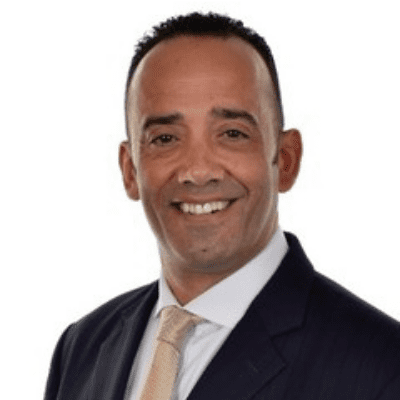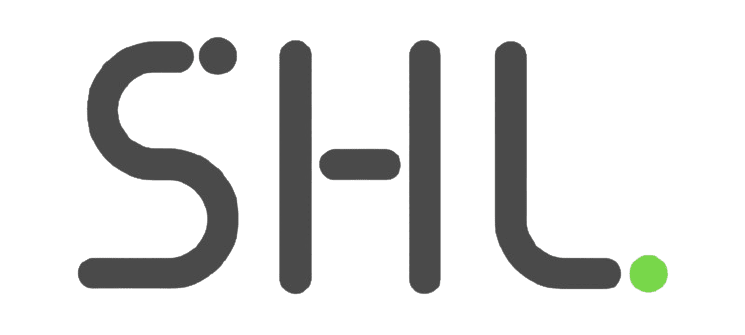Talent insights that drive the Employee Experience: Shakeup the status-quo
Talent insights are transforming organizations’ approaches to the employee experience.
With the powerful combination of people, science, and technology, HR leaders can capture and utilize talent insights like never before.
You now have the incredible ability to match consumer-grade expectations with personalized and inclusive workplace experiences.



How can you use talent insights to revolutionize the employee experience and meet business goals?
UNLEASH partnered with SHL and Sweco to deliver HR leaders a practical session on how to transform the employee experience using talent insights. They discussed how businesses can diagnose the inefficiencies and gaps in their talent management strategies and processes, and outlined an approach for leaders to create change – to drive human connection, insight, democratization, and agility.
Watch on-demand as Åsa Saltin Meerits, Talent and Acquisition Manager at Sweco, shares her experiences of gathering data and turning it into insights, then actions.
Watch this recording to discover:
- How data-led insights can uncover the inefficiencies in your current talent management processes, with examples from real, lived experiences from HR-industry peers
- How to start your data journey towards unbiased insights into your talent and uncover the dynamics of your workforce.
- What talent data is important in your own organization’s context and connect those insights to map skills gaps and needs for the future.
- Match your broader organizations’ objectives with your talent management strategies, allowing you to be more agile and adaptable in an ever-changing context.
About Sweco: Sweco is a professional services company within architecture and engineering within Northern Europe. They have approximately 18,000 employees and have a purpose, to “transform society together”.
Why is having people insights so important?
In a survey SHL did last year, 90% of respondents said that having more relevant insight on their people, could really transform their approach to talent management. Åsa believes that the rules have changed in the world of work, leading to this interest and uptake. During the session, she shared:
A job is so much more than just earning money for a person. You want to join a culture, a company that you’re proud of and you feel that you can genuinely grow and get fulfilled. And most companies have purposes and Employer Value Propositions, but for that not to be empty words, we need to build a structure where we can measure the data that supports these values, that can provide knowledge around our employees, and provide them with development.
Andrew went on to consider why he thinks there’s been such an uptake and interest in people insights within organizations at large. Part of the reason, he discussed, is the culture and expectations around data that there are now. Our everyday lives, as well as our working worlds, are filled with dashboards and data, so he believes it’s part of a wider transformation around the need to understand and explore deeper than we ever have done because we’ve got the capabilities to do so, and that’s what is expected.
He spoke specifically to the uptake in people insights stemming from organizations really wanting to grasp who the people in their organizations are, being able to map talent for the future, understanding how employees feel about the leadership, for example. Agreeing with Åsa, he told the audience that leaders are wanting to connect up their strategies and the purpose and culture, and more “human” things, with true insight and understanding the impact of those areas on the bottom line.
The Sweco journey:
Åsa shared where their journey began, hopefully enabling other organizations to understand how they can start out their own journeys. Sweco started off with career pathways and an EVP for example but didn’t have a competency model. She told the audience that they initially used SHL’s Strategic Talent Management Model as their starting point. The aim of this is to connect the talent management strategy and people strategy with the organization’s overall strategy.
The first step, she would agree with, is to build a talent architecture that underpins the organizational strategy. To do this, Åsa and her team have worked on building a general competency model that they call the “Sweco Core Behaviors”, working from SHL’s evidence-based competency model that is universal in its approach. They have adapted the model for their own purposes, slightly altering certain headings so it falls more in line with Sweco’s language.
The framework allows for Åsa and the talent team to manage the selection of internal and external talent, as well as drive development and succession planning. They can then, off the back of this, gather data and insights to drive future strategies and enable change management.
Andrew considered the usefulness of having this type of framework – allowing organizations to realize their vision of where they want to go and what they want to be, and then being able to work out how their current talent matches this, and what they need to change and do, in order to get there.
What does Sweco measure about its people and how?
Currently, as Åsa divulged to the audience, Sweco uses pulse checks, and engagement surveys, as well as measuring the Sweco Core Behaviors.
In any external or internal selection or development activity, we try to measure personality and cognitive ability. If it’s internal, we also measure motivation, to really get the full potential of an individual. Then we also have 360’s in the pipeline.
Later in the session, she also disclosed that they have measures relating to DE&I for example, as well as additional competencies for leaders in the organization – things like democratic leadership styles for example. To understand what the competency model should be, they worked with a bottom-up approach, engaging key stakeholders from the organization who were asked to prioritize what good looked like to them, at Sweco. From this, Åsa and her team could anchor and agree on what behaviors are successful for them as an organization.
Andrew flagged that many organizations have these types of processes for measuring in place and are already capturing this type of information on their people, but part of the challenge and where he sees them struggling, is connecting this data. He discussed that there needs to be a sense of what HR leaders and organizations generally want to get out of their insights first, in order to start making sense of the data they have available, and making use of it. Andrew also considered the importance of the cultural, value-driven measures of people insights that can determine the fit of an individual, and their likely career path and road of success within the organization.
Åsa shared that at Sweco, they are beginning to understand and measure competencies that indicate employees that are proactive in driving their own development. In parallel her team is then working with Strategic Workforce Planning, so, they are expecting to have to develop and re-train employees, but are able to also note when certain employees have a passion and drive to do so – through flagging certain personality characteristics and measuring those. She feels that this is really enabling employees to understand themselves, and allowing transparency around the organization’s vision and expectations, and what they know works and doesn’t. This, in turn, is encouraging personal development and for individual employees to drive their own success. Furthermore, Åsa has also found that having these competency models empowers the organization’s leadership to buy into people insights as a practice, as they are also going through this process too.
The future of people insights?
Åsa believes that the future is being able to measure, and then delve into and garner actionable takeaways from the sorts of insights that they are beginning to gather at Sweco – things like personality and motivation, and the sorts of areas of analytics that will enable organizations and leaders to really know their people, and for employees to know themselves. And Andrew similarly believes that insights will move into remits that enable predictability and future-scoping, rather than just focusing on the current state of play, leading to better-informed strategy and a seat at the table for those leading with people insights.
Key takeaways:
- Companies need people insights in order to be provided with knowledge about their employees, which can then enable leaders to map and strategize their employee’s development for the future.
- There are extremely valuable insights to be gathered on an organization’s workforce, from information around DE&I, through to measuring the cultural, value-driven indicators that can determine the fit of an individual, and their likely career path and road of success within the organization.
- Organizations need to start with where they want to get to, then determine what they need to get to that point, in order to begin to connect the data they likely already have at their disposal. This will provide the building blocks to start measuring and utilizing the people insights that can then truly drive change in the business.
- A competency framework like SHL’s is linked to insights and business outcomes. For example, connecting employee data on motivation will help organizations understand which employees will thrive during transformation. It can be a great starting point for knowing where and how to gather data and insights to drive current and future strategies and enable change management in an organization.
If you are interested in learning more about how your organization can create a culture that positively impacts the growth and commitment of talented employees for the long term, applications are now open for our closed-door roundtable session with SHL on Wednesday 8th December. To find out more about the event, and to register your interest, click here.
